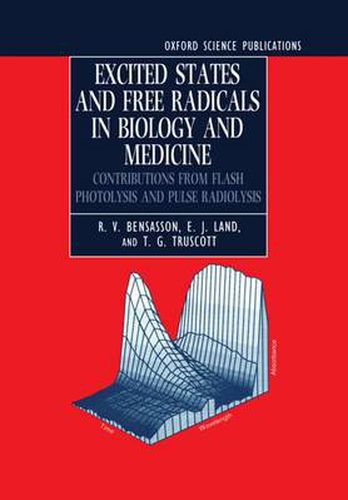Readings Newsletter
Become a Readings Member to make your shopping experience even easier.
Sign in or sign up for free!
You’re not far away from qualifying for FREE standard shipping within Australia
You’ve qualified for FREE standard shipping within Australia
The cart is loading…






Excited states and free radicals are involved in the normal physiology of living systems; in pathological processes including lipid peoxidation, inflammation, Parkinson’s disease, cancer, and ageing; in the mechanism of action of drugs, such as quinone antitumour agents, and in the photochemotherapies such as the PUVA therapy of skin diseases and PDT of cancer. The chief aim of this text is to introduce the reader to this rapidly expanding field, which lies at the borderlines of physics, chemistry, biology, pharmacology, and medicine, and, in particular, to explore how time-resolved spectroscopic methods have found solutions at the molecular level to biological and medical problems.
In the first three chapters, the nature of excited states and free radicals, and the fast kinetic and spectroscopic techniques for their study are described. Amongst the biological areas described in the subsequent chapters are: activated oxygen species; DNA; proteins; carotenoids and photosynthetic reaction centres; photodermatology and melanogenesis; and aspects of cancer related to radio-, chemo-, and photodynamic therapy.
$9.00 standard shipping within Australia
FREE standard shipping within Australia for orders over $100.00
Express & International shipping calculated at checkout
Excited states and free radicals are involved in the normal physiology of living systems; in pathological processes including lipid peoxidation, inflammation, Parkinson’s disease, cancer, and ageing; in the mechanism of action of drugs, such as quinone antitumour agents, and in the photochemotherapies such as the PUVA therapy of skin diseases and PDT of cancer. The chief aim of this text is to introduce the reader to this rapidly expanding field, which lies at the borderlines of physics, chemistry, biology, pharmacology, and medicine, and, in particular, to explore how time-resolved spectroscopic methods have found solutions at the molecular level to biological and medical problems.
In the first three chapters, the nature of excited states and free radicals, and the fast kinetic and spectroscopic techniques for their study are described. Amongst the biological areas described in the subsequent chapters are: activated oxygen species; DNA; proteins; carotenoids and photosynthetic reaction centres; photodermatology and melanogenesis; and aspects of cancer related to radio-, chemo-, and photodynamic therapy.